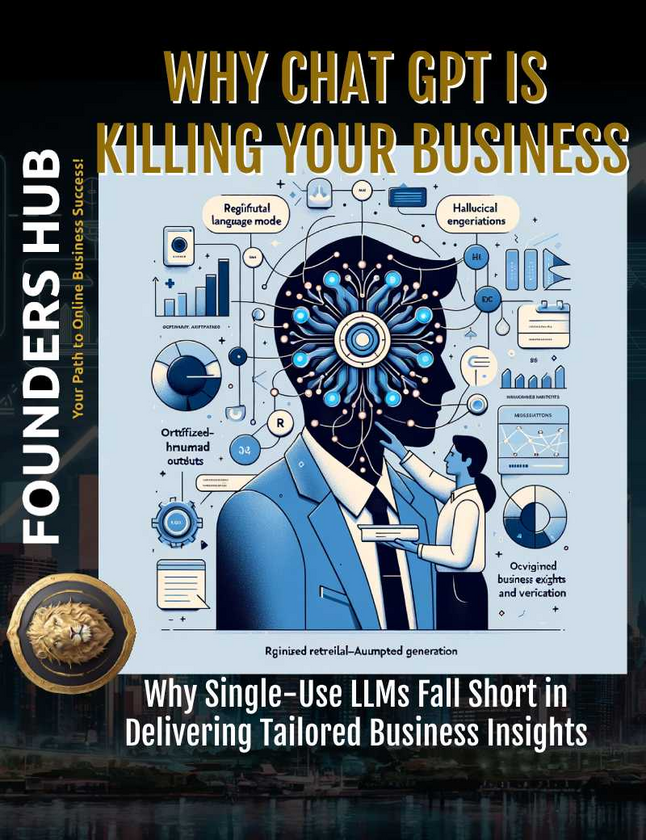In today's digital age, businesses can no longer afford to have a fragmented online presence. With 91% of companies using more than one channel to interact with customers, it's crucial to provide a consistent and personalized experience across various touchpoints. A unified digital presence is the key to achieving this, and it involves integrating different digital channels and techniques to improve a brand's online visibility and deliver a coherent message.
Key Takeaway: A unified digital presence is essential for businesses to provide a seamless and personalized customer experience, boost engagement, reach a wider audience, and ultimately drive growth.
Introduction
- Importance of a Unified Digital Presence
In the ever-evolving digital landscape, businesses must adapt to meet the changing needs and expectations of their customers. With 85% of consumers conducting research before making a purchase online, it's imperative for companies to have a strong and cohesive digital presence. A unified digital presence refers to a seamless integration of various digital channels, such as websites, social media platforms, mobile apps, and email marketing, to deliver a consistent and personalized experience to customers.
- Brief Overview of Benefits
By establishing a unified digital presence, businesses can reap numerous benefits, including improved customer experience, increased engagement, and ultimately, business growth. With 74% of consumers using websites and 38% using social media for research, a cohesive online presence can help businesses reach their target audience more effectively and build trust and credibility. Additionally, a unified digital presence enables businesses to track and analyze customer interactions across different channels, allowing them to make data-driven decisions and optimize their marketing strategies.
Customer Experience
- Key Elements of Customer Experience
In today's competitive market, delivering an exceptional customer experience is paramount for businesses to thrive. Customers demand control over their shopping journey, less friction in navigation and transaction processes, consistency across all touchpoints, transparency in communication and information access, and personalization based on their preferences and data.
- Role of Digital Experience Platforms (DXPs)
Digital experience platforms (DXPs) play a crucial role in helping businesses meet these customer expectations.
DXPs are software solutions that integrate various tools and platforms to deliver a unified and personalized experience across multiple digital channels. By leveraging customer data and advanced analytics, DXPs enable businesses to create tailored content, offers, and experiences that resonate with their target audience. This not only enhances personalization but also ensures consistency, two key elements of a successful digital strategy.
Digital Architecture
- Definition and Components of Integrated Digital Architecture
Integrated digital architecture is the foundation that enables businesses to manage and optimize their digital experiences effectively. It involves central management of multiple digital channels, including websites, social media, mobile apps, email marketing, and data analytics. This centralized approach ensures that the brand's message and visual identity remain consistent across all platforms, fostering a unified messaging strategy.
- How It Helps in Managing and Optimizing Digital Experiences
Integrated digital architecture offers several advantages in managing and optimizing digital experiences. First, it promotes efficiency and scalability, making it easier for businesses to manage and expand their digital efforts as they grow. Second, it facilitates data integration, allowing businesses to combine data from different sources to gain a comprehensive view of customer interactions and preferences. Third, it enables performance tracking through unified analytics, enabling businesses to measure the effectiveness of their digital strategies and make informed adjustments. Finally, it fosters adaptability and agility, empowering businesses to respond quickly to market changes and customer needs.
Benefits of a Unified Digital Presence
- Boosting Engagement and Credibility
A unified digital presence can significantly boost engagement and credibility for businesses. By providing engaging content and a seamless navigation experience across all digital channels, businesses can keep users interested and encourage them to explore more of their offerings. Additionally, a consistent and professional online presence helps establish brand authority, building trust and credibility with potential and existing customers.
- Reaching a Wider Audience
Implementing an omnichannel strategy through a unified digital presence allows businesses to connect with a broader demographic. By leveraging multiple channels, businesses can cater to the diverse preferences and behaviors of their target audience, increasing their chances of being discovered and engaging with potential customers. Furthermore, a cohesive online presence can improve SEO and online visibility, as search engines favor websites with consistent and high-quality content across various platforms.
- Consistent Messaging and Tracking Results
A unified digital presence ensures that businesses can deliver a consistent brand voice across all communication channels. This consistency reinforces the brand's identity and message, making it more memorable and recognizable to customers. Additionally, integrated digital architecture provides businesses with comprehensive analytics, enabling them to track performance metrics across all channels and gain a holistic view of their digital efforts' effectiveness.
- Building Stronger Customer Relationships and Improving ROI
By delivering consistent and personalized experiences, businesses can foster customer loyalty and build stronger relationships with their customers. Satisfied customers are more likely to become repeat customers and advocates for the brand, driving long-term growth and profitability. Furthermore, a unified digital presence can lead to increased sales and conversions, as customers are more likely to engage with and purchase from brands that provide a seamless and tailored experience. Finally, streamlined operations and better resource allocation through integrated digital architecture can result in cost-effectiveness, improving the overall return on investment (ROI) for businesses.
| Benefit | Description |
|---|---|
| Boosting Engagement and Credibility | Engaging content, seamless navigation, and professional presence build trust and credibility. |
| Reaching a Wider Audience | Omnichannel strategy and improved SEO help businesses connect with a broader demographic. |
| Consistent Messaging and Tracking Results | Consistent brand voice and comprehensive analytics across all channels. |
| Building Stronger Customer Relationships and Improving ROI | Personalized experiences foster loyalty, increased sales, and cost-effectiveness. |
Conclusion
- Recap of the Importance of a Unified Digital Presence and Its Benefits
In the digital age, businesses cannot afford to have a fragmented online presence. A unified digital presence, facilitated by integrated digital architecture and digital experience platforms, is essential for delivering a consistent and personalized customer experience across various touchpoints. By implementing a cohesive digital strategy, businesses can boost engagement, credibility, and online visibility, reach a wider audience, deliver consistent messaging, and track results effectively. Ultimately, a unified digital presence enables businesses to build stronger customer relationships, increase sales and conversions, and improve their overall return on investment.
- Final Thoughts on Implementing Integrated Digital Architecture
While transitioning to a unified digital presence may require an initial investment of time and resources, the long-term benefits are undeniable. Businesses should prioritize implementing integrated digital architecture and leveraging digital experience platforms to streamline their digital efforts and stay ahead of the competition. By embracing this approach, businesses can future-proof their operations, adapt to changing customer needs, and position themselves for sustained growth and success in the digital landscape.




















